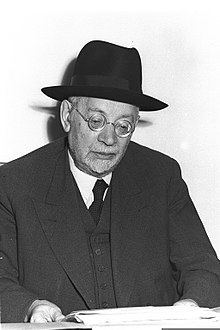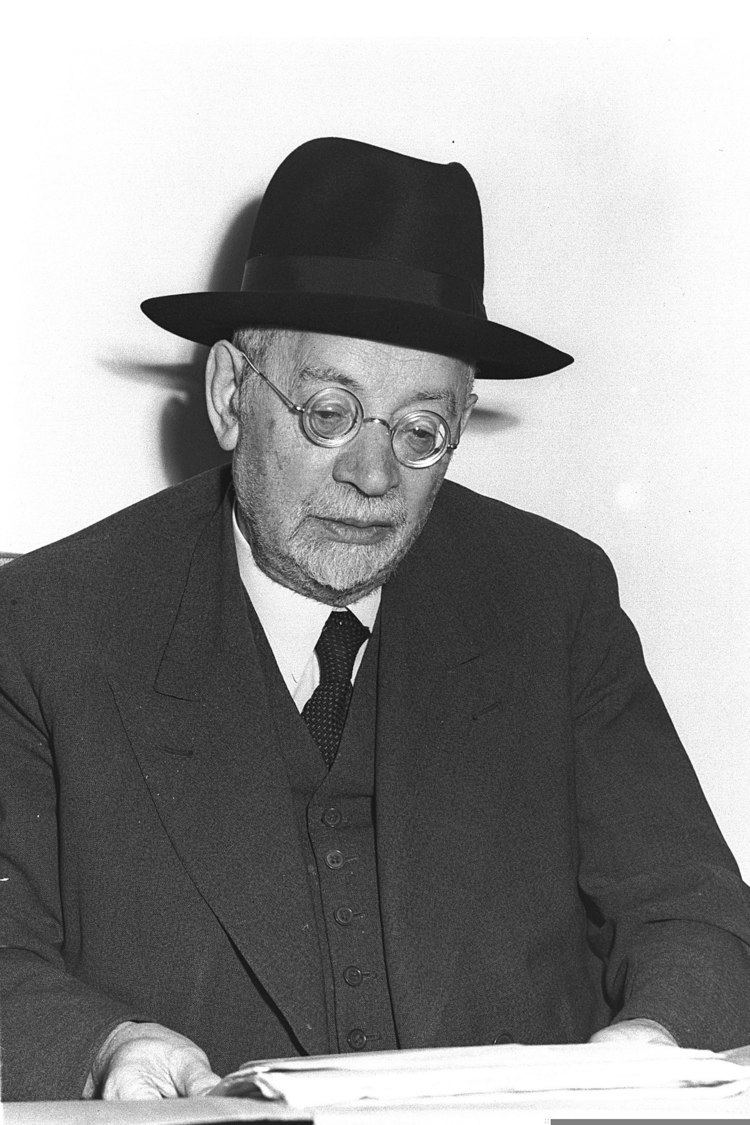Date of birth 11 December 1875 Role Politician Name Yehuda Maimon | Year of aliyah 1913 | |
 | ||
Date of death 10 July 1962(1962-07-10) (aged 86) 1948–1951 Minister of Religions and War Victims Knessets Israeli legislative election, 1949 | ||
Yehuda Leib Maimon (Hebrew: יהודה לייב מימון, 11 December 1875 – 10 July 1962, also known as Yehuda Leib Hacohen Maimon) was an Israeli rabbi, politician and leader of the Religious Zionist movement. He was Israel's first Minister of Religious Affairs.

Biography
Yehuda Leib Fishman (later Maimon) was born in Mărculești, Bessarabia (then part of the Russian Empire, now in Moldova), Maimon studied in a number of yeshivot and received rabbinic ordination from Rabbi Yechiel Michel Epstein, the author of the Aruch HaShulchan. He was one of the founders of the Mizrachi movement in 1902. By this time Maimon had moved to the Russian Empire, where he was arrested several times for Zionist activity. He was a delegate to the ninth Zionist Congress in 1909, and attended every one until Israeli independence in 1948.
In 1913, Maimon moved to Palestine (then part of the Ottoman Empire), but was expelled during World War I. He moved to the United States, where he organised the Mizrachi movement. After returning to Mandate Palestine (now under British control) in 1919, Maimon became leader of Mizrachi in the country and together with Abraham Isaac Kook he helped establish the Chief Rabbinate. He was elected to the board of the Jewish Agency in 1935. In 1937, he founded Mossad Harav Kook, a religious research foundation and notable publishing house named in honor of Rabbi Abraham Isaac Kook.
In 1946, he was imprisoned by the British in Latrun during Operation Agatha. The British detained him on the Jewish Sabbath, and he objected to riding in a vehicle on the Sabbath, and offered instead to walk to a nearby police station. The British refused his offer and forcibly manhandled him into a waiting car.
Maimon helped draft Israel's declaration of independence, and was one of the people to sign it. He was appointed Minister of Religions and War Victims in the provisional government set up immediately after independence. He was elected to the first Knesset in 1949 as a member of the United Religious Front (an alliance of Agudat Yisrael, Poalei Agudat Yisrael, Mizrachi and Hapoel HaMizrachi) and retained his ministerial role in the first and second governments. He was the driving force behind a failed effort to reestablish the Sanhedrin. He lost his seat in the 1951 elections.
He was also heavily involved in various Jewish publishing endeavors and was awarded the Israel Prize in 1958 in Rabbinical literature. His sister, Ada also served as a member of the Knesset for Mapai. One of his great grand-daughters is the model Nina Brosh.
